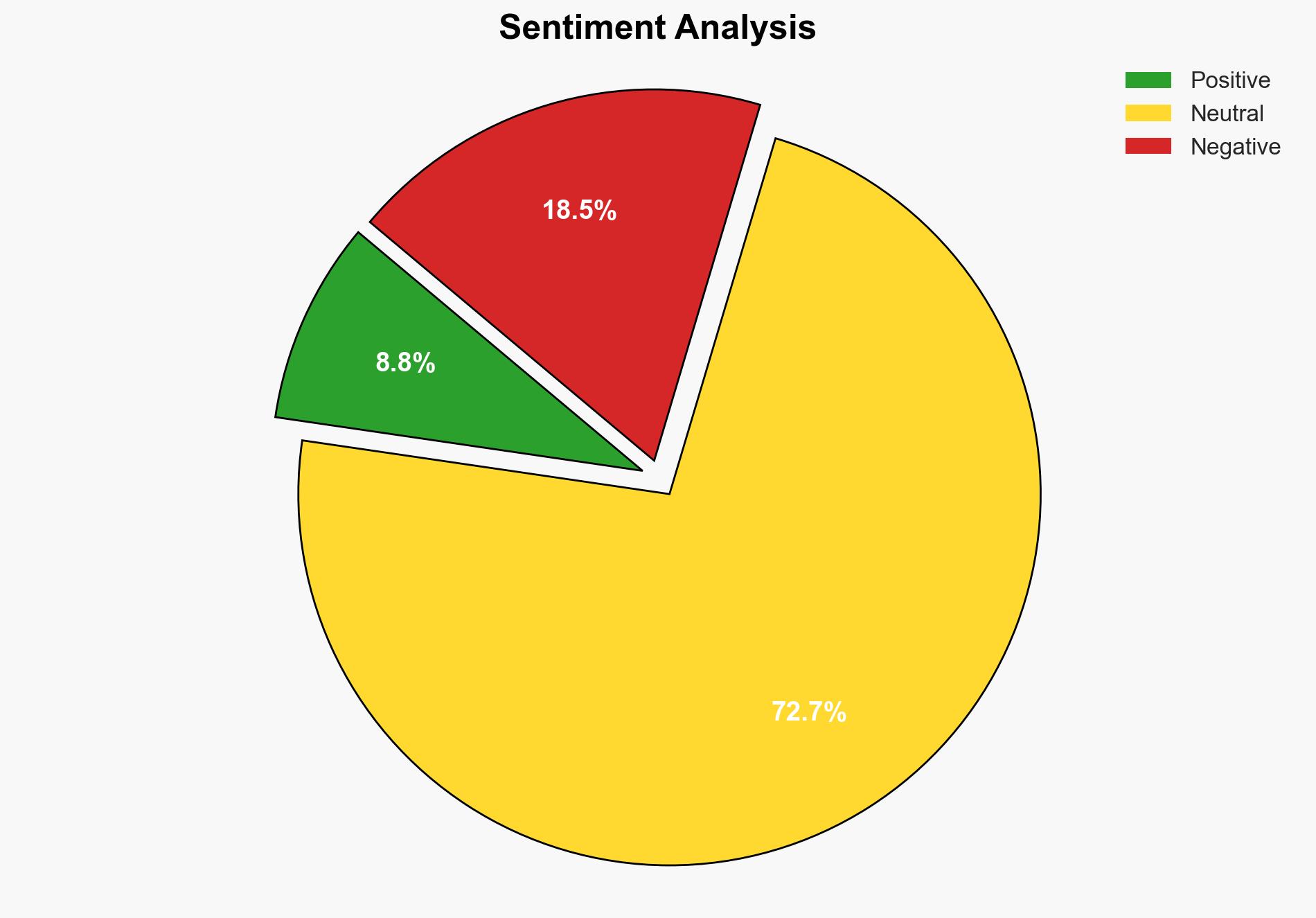The Goals of Israels ongoing Aggression against Syria – Juancole.com
Published on: 2025-03-17
Intelligence Report: The Goals of Israels ongoing Aggression against Syria – Juancole.com
1. BLUF (Bottom Line Up Front)
Israel’s ongoing military operations in Syria aim to reshape regional dynamics by maintaining a strategic military presence and countering perceived threats from neighboring entities. The operations are designed to prevent hostile forces from establishing bases near Israel’s borders and to counterbalance regional adversaries such as Turkiye. The strategic objectives include redrawing borders, disarming southern Syria, and securing influence over strategic areas.
2. Detailed Analysis
The following structured analytic techniques have been applied for this analysis:
General Analysis
Israel’s military actions in Syria are multifaceted, involving air and ground operations aimed at imposing a new geopolitical reality. The operations are not limited to military strikes but include broader strategic goals such as preventing arms smuggling into Lebanon and countering Turkiye’s influence in the region. The involvement in Syria under the pretext of protecting certain populations reflects deeper strategic ambitions to control key areas and mitigate threats from Islamist elements perceived as hostile.
3. Implications and Strategic Risks
The ongoing aggression poses significant risks to regional stability, potentially escalating into broader conflicts involving neighboring countries. The presence of foreign military forces, including those from Turkiye and Iran, complicates the situation, increasing the likelihood of direct confrontations. Economically, the instability could disrupt trade routes and impact energy markets, affecting global economic interests.
4. Recommendations and Outlook
Recommendations:
- Engage in diplomatic efforts to de-escalate tensions and establish communication channels between involved parties.
- Enhance intelligence-sharing mechanisms to monitor and mitigate threats from non-state actors in the region.
- Consider regulatory measures to control the flow of arms and prevent further militarization of the conflict.
Outlook:
Best-case scenario: Diplomatic interventions lead to a reduction in hostilities, with regional powers agreeing on a framework for peace and stability.
Worst-case scenario: Escalation into a full-scale regional conflict involving multiple state actors, leading to significant humanitarian and economic crises.
Most likely outcome: Continued low-intensity conflict with periodic escalations, maintaining a fragile status quo while diplomatic efforts continue.
5. Key Individuals and Entities
The report mentions significant individuals and organizations involved in the ongoing situation. Notable figures include Juancole, who provides analysis on the geopolitical implications, and unnamed Israeli and Syrian entities involved in the military operations and strategic planning.




